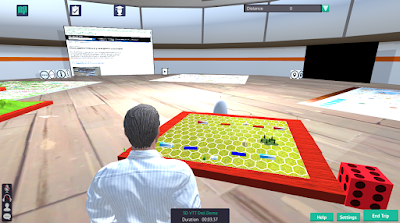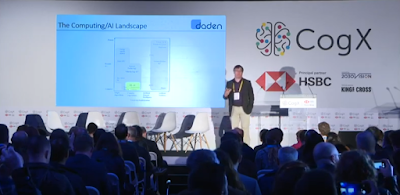A good day yesterday at Coventry's Manufacturing Technology Centre where Dstl were holding a show-and-tell on Defence Wargaming. We were luck enough to get a demo and a talking slot.
For the occasion David updated the Virtual Wargames Room (our 3D Virtual Tabletop - 3D VTT) we built in Trainingscapes a year or so ago. The new version was optimised for the Oculus Quest (which meant the hex board and model soldiers had to go).
Within the space we have:
- Three big floor maps for wargames, BAOR 1984 (an old SP game), Waterloo and the Modern War's Crisis in the Baltic. These have a real sense of scale, the BAOR map in particular looks like it's filling a whole sports hall and you just want to walk all over it!
- Example counters (done as cubes for ease of handling) for each game
- A more conventional "wargames table", in this case with a hex grid and some example troop blocks and terrain features, and even an example simple 3D sculpt tank and figure (think Airfix 1/32nd!)
- A dice for random number generation
- Some static information panels (one on Soviet tactics, the other a ruleset aide-memoire)
- A couple of dynamic information panels/web browsers to bring in rule or period related data or even live Google Docs so you can log (or read) activity and someone on the web can read/update it.
One of the whole aims was to keep it very simple. Nothing is automated, it works just the same way as though you got a physical wargame out on a real table (and we even had people knocking things off the table as in real life, and picking them up to keep the place tidy afterwards).
 |
| A visitor moving virtual pieces on a virtual wargames table! |
The whole day gave a good insight into some of the companies working in the professional wargaming space (or with aspirations to work there), running the whole gamut from machine-learning AI based systems to good old paper and card wargames and PIP dice for unit activation. There was also a good presentation on the current MOD needs in this area, so hopefully we'll get the chance to progress some of the ideas we presented a bit further.


































